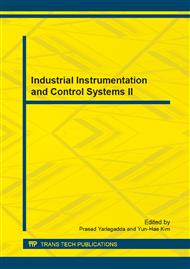p.2099
p.2103
p.2107
p.2111
p.2115
p.2119
p.2124
p.2130
p.2134
Word Similarity Computation Based on WordNet and HowNet
Abstract:
Word similarity computation is broadly used in many applications, such as information retrieval, information extraction, text categorization, word sense disambiguation and example-based machine translation and so on. The main obstacle of word similarity computation lie in that how to develop a computational algorithm that is capable of generating satisfactory results close to how human perceive. This paper proposed an approach of word similarity computation which combined WordNet and HowNet. Experiments on Chinese word pairs show that our method is closest to human similarity judgments when compared to the major state-of-art methods.
Info:
Periodical:
Pages:
2115-2118
Citation:
Online since:
July 2013
Authors:
Keywords:
Price:
Сopyright:
© 2013 Trans Tech Publications Ltd. All Rights Reserved
Share:
Citation:


